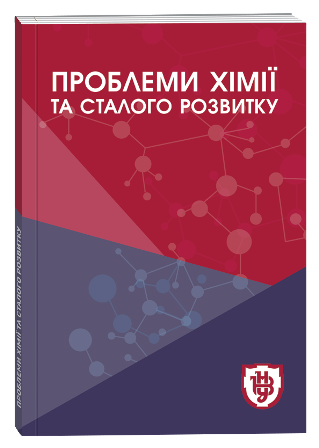ENVIRONMENTAL POLLUTANTS OF THE RAIN SEWER SYSTEM MYKOLAIV СITY
DOI:
https://doi.org/10.32782/pcsd-2022-3-3Keywords:
storm sewer drains, pollution, pollutants, Bug estuaryAbstract
The article is devoted to the study of the chemical composition and quantitative volume of pollutants in the Bug estuary with sewage rainwater from Mykolaiv. It is known that sewage from industrial enterprises and utilities is threatened by a significant additional burden on limited regional water resources. Uncontrolled storm sewers are of particular concern. In the city Mykolaiv of 49 rain drains are registered, from which 19 have direct dumping in open reservoirs. The aim of the work was to study the chemical composition and volume of urban stormwater runoff to the Bug estuary. The materials of the study were the results of chemical analyzes of water samples from four storm sewers in Mykolaiv, performed in 2021. Materials of chemical analyzes of water samples from five rainwater sewage in Mykolaiv in 1997 were added. It is proved that in drains of the rain sewerage of Mykolaiv to the Bug estuary there are phosphates, oil products, nitrite nitrogen. The frequency of exceeding the maximum allowable concentrations is: for biological oxygen consumption in 14-37 times; nitrites 10-39 times; chemical oxygen demand 7-18 times. It is shown that lead, nickel, iron, copper, chromium, and zinc enter the Bug estuary with rainwater runoff. Excessive pollution of rainwater with suspended solids is associated with pollution of dust, soil, clay, etc. Excessive pollution with petroleum products and heavy metals is associated with the operation of vehicles and industrial enterprises. It is shown that for some of the substances that pollute the rain sewer (phosphates, nitrates) are mostly responsible for unauthorized connections of domestic and industrial sewers. Prospects for further research are the study of the sorption capacity of bottom sediments for pollutant retention and assessment of the ecological capacity of bottom sediments of the Bug estuary.
References
Артющенко О. В. Система басейнового управління водними ресурсами як складова організаційно-економічного механізму водокористування: Вісник Нац. ун-ту водного господарства та природокористування. Економіка: зб. наук. пр. НУВГП. – Рівне, 2006.
Гумас Р. Расчеты гидрографа ливневого стока / Охрана водоисточников и рациональное их использование, Вильнюс, 2003. – C. 134
Дикаревский В. Отведение и очистка поверхностных сточных вод. Л.: Стройиздат, 1990. – 235 c.
Дмитрієва О.О., Хоренжая І.В. Екологічно безпечне водовідведення з території м. Одеса в аварійних ситуаціях: Харків, 2013 – 37 c.
Дмитрієва О.О., Хоренжая І.В. Організація екологічно безпечного водовідведення в населених пунктах України // Екологічні науки, № 10, 2004. – С. 131-138.
Максименко О.А. Удосконалення систем відведення та очищення зливових стоків машинобудівних підприємств для забезпечення екологічної безпеки: дисс. канд. тех. Наук: 21.06.01. Харків, 2020. – 186 с.
Нормативи екологічної безпеки водних об'єктів, що використовуються для потреб рибного господарства: Наказ Міністерства аграрної політики та продовольства України, 30.07.2012, № 4713
Правила охорони внутрішніх морських вод і територіального моря від забруднення та засмічення: Постанова Кабінету Міністрів, № 269, 29.02.1996
Фельдштейн Е. Г. Совершенствование систем очистки поверхностного стока предприятий первой группы на примере автотранспортных предприятий : дис… канд. техн. наук 05.23.04. – Волгоград, 2014. – 191 с.
Фомичева Г.И., Вдовин Ю.И., Лушкин И.А. Совместное отведение дренажно-ливневого стока: Материалы IV международного конгресса / Вода: экология и технология, М.: Экватек, 2000. – С. 57.







